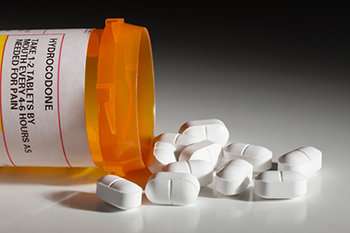California survey finds physicians, pharmacists comply with prescription drug monitoring law

A state law that funded upgrades to California's prescription drug monitoring program and mandated physicians, pharmacists and controlled substance prescribers to register by July 2016 significantly increased registration rates, a new survey of 1,904 California physicians and pharmacists conducted by the UC Davis Violence Prevention Program has found.
The online survey, conducted from August 2016 to January 2017 in collaboration with the California Department of Public Health, assessed the expanded functions of the Controlled Substance Utilization Review and Evaluation System (CURES), the statewide electronic database that tracks all controlled substance prescriptions (such as opioid pain relievers) dispensed by California pharmacies.
The survey also evaluated physicians' and pharmacists' attitudes about prescription drug misuse and abuse, prescribing practices, and expectations about using prescription drug monitoring programs when prescribing or dispensing controlled substances.
"A major goal of the study was to identify ways to make CURES more useful and, by extension, to encourage registration and use," said Stephen Henry, assistant professor of general medicine at UC Davis and lead author of the report.
Increased registration
Ninety-six percent of pharmacists and 82 percent of physicians surveyed had registered for CURES, compared to only about 25 percent of physicians and 50 percent of pharmacists in 2015. Among the unregistered physicians, 71 percent said they were not aware of the new registration requirement but would likely register for CURES during the next three months.
"While California's mandatory registration law successfully increased CURES registration rates, physicians lag slightly behind pharmacists in registration and use, and perceive CURES to be less useful than do pharmacists," Henry said.
Twenty-eight percent of physicians said they check CURES for at least half of the patients for whom they prescribe controlled substances, and 36 percent of pharmacists check CURES for at least half of the prescriptions they dispense.
Preliminary data from the California Department of Justice, which administers the CURES program but was not involved in the survey, suggests that the total number of queries to the CURES system by pharmacists and prescribers more than doubled between January 2015 and January 2017.
CURES use mandated
Experts have recommended that physicians, pharmacists and other prescribers review patients' prescription histories in CURES before prescribing controlled substances, and President Trump's Commission on Combating Drug Addiction and the Opioid Crisis have identified prescription drug monitoring programs like CURES as key tools for preventing prescription drug misuse and overdose.
A new law (SB-482) passed in 2016 that is expected to go into effect in 2018 will require physicians and other prescribers to check CURES when they prescribe controlled substances.
Nearly 70 percent of pharmacists and 40 percent of physicians surveyed consider checking CURES to be standard of care when prescribing or dispensing controlled substances. But support for the mandatory use of CURES was somewhat lower, with only 39 percent of pharmacists and 23 percent of physicians agreeing.
Physicians' and pharmacists' beliefs about how often their peers use CURES—but not their sense of professional obligation to use CURES—also predicted their intent to use CURES in the future.
"Education and outreach efforts that emphasize physicians' and pharmacists' use of CURES may be more effective at driving use of the database than moralizing to pharmacists and physicians," Henry said. "Continued improvements to CURES will also make it easier for physicians and pharmacists to comply with the law and share information to prevent and address the abuse of opioids and other controlled substances."
The survey was conducted in part to evaluate updates to the CURES program that were funded in the same bill that required physicians and pharmacists to register for CURES. These updates included streamlined electronic registration, automatic alerts for certain high-risk prescribing practices, ability to send peer-to-peer messages and flag patient-provider agreements, and the ability for user delegates to initiate patient reports on behalf of pharmacists and prescribers.


















